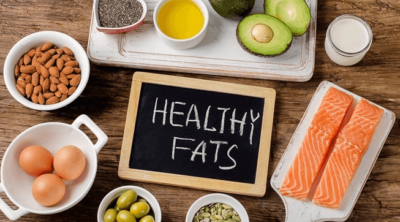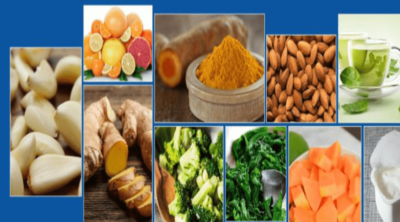
The artichoke is a less-commonly consumed vegetable due to lack of knowledge of its preparation and how it should be used in food items. But the calorie content of this vegetable makes it an ideal food for weight loss. Scroll below for a nutritional analysis of artichokes.
The term “thistle” is used to denote flowering plants, which have prickles all over their leaves and even on their flower. This prickly exterior is used to dissuade herbivores from eating the plant. Even brushing against the flower of the thistle, is enough to give you a good poke. But funnily enough, one plant belonging to the thistle classification, is edible. This is Cynara cardunculus var. scolymus or the globe artichoke. This plant has a rather intimidating closed-off appearance with its large silvery-green leaves and large purplish head or bud. The vegetable or edible part of this plant is the bud from which flowers develop. The bud consists of fleshy wide portions (florets) and the base that supports the florets, both of which are edible. The center of the bud is fuzzy brownish flesh, which are immature florets. This is called the choke or beard. Artichokes come in various cultivars with different sizes and in green or purple colors. The artichoke grows predominantly in the Mediterranean region of Southern Europe, mainly Italy, France and Spain. In the U.S, the state of California is the dominant grower of artichokes.
How is the artichoke used in food? It is prepared for consumption by boiling or steaming. The stem and the hard part of the scaly leaves, are trimmed away. The whole artichoke bud is steamed or boiled, with or without salt, until it turns soft and tender. The bud can be served whole with an appetizing dip. The leaves can be plucked off one at a time, dipped and eaten, then the choke is removed and discarded and then the heart is eaten. Artichoke hearts can be separated from the body, chopped or diced or used whole, in various recipes, especially pasta and stew dishes. Stuffed artichokes are another popular way to enjoy this vegetable. A prepared artichoke can be stuffed with vegetables, meat and cheese or a number of artichoke hearts can be stuffed and then baked and served with a sauce or deep-fried.
Nutritional Analysis of Artichokes
There are nutritional benefits in eating artichoke but what about its calorific content? Below is a tabular comparison of the calories in artichokes, raw and cooked.
| Type | Serving Size | Calories | Proteins | Fat |
| Boiled and cooked artichokes | 1 artichoke (120 g) | 64 | 3.47 g | 0.41 g |
| Raw artichokes | 1 artichoke (128 g) | 60 | 4.19 g | 0.19 g |
| Native Forest® whole artichoke hearts in water | 4 oz (120 g) | 35 | 2 g | 0 g |
| Progresso® ready to serve artichoke hearts | 3 hearts (130 g) | 30 | 1 g | 0 g |
| Wegmans Italian Classics® artichoke hearts in brine | 4 hearts (130 g) | 35 | 2 g | 0 g |
| Native Forest® artichoke hearts marinated in olive oil and spices | 1 oz (28 g) | 20 | 0 g | 2 g |
| Progresso® marinated artichoke hearts | 2 hearts (32 g) | 60 | 0 g | 5 g |
| Wegmans® artichoke asiago dip | 2 tablespoons (30 g) | 150 | 1 g | 15 g |
| Artichoke stuffed with Parmesan, oregano, olive oil and breadcrumbs | 1 artichoke | 479 | 18.8 g | 21.1 g |
| Wegmans Food You Feel Good About Special Blends® artichokes & asparagus in a lemon butter sauce | ¼ package (113 g) | 50 | 3 g | 1.5 g |
So how many calories are there in an artichoke? The heart portion has around 30-35 calories on an average. The whole artichoke with stem and florets has about 60. Notice the fatty content. Raw artichokes have a slightly higher fat content as opposed to their boiled counterparts. But on the whole, the fat content of this vegetable is negligible, making it a very healthy vegetable for weight loss. Along with low calorific value and minimal fat content, it is also a high-fiber veggie, so your digestive process is enhanced allowing for better weight loss. It also fills up your stomach, so your hunger is satisfied from eating less.
While the vegetable boiled and eaten whole is healthy, food products using artichoke may not be so healthy, due to the calories present in the other ingredients. Even stuffed artichokes can pile on the calories en masse, due to the calorific content of the stuffing ingredients. One cheese and breadcrumb stuffed artichoke has a whopping 479 calories! That is equal to eating 1 cup of cheese sauce or 1 cup of spaghetti in clam sauce. So, read the labels of artichoke sauces and dips and try to include this vegetable in your diet in its whole and natural form.

